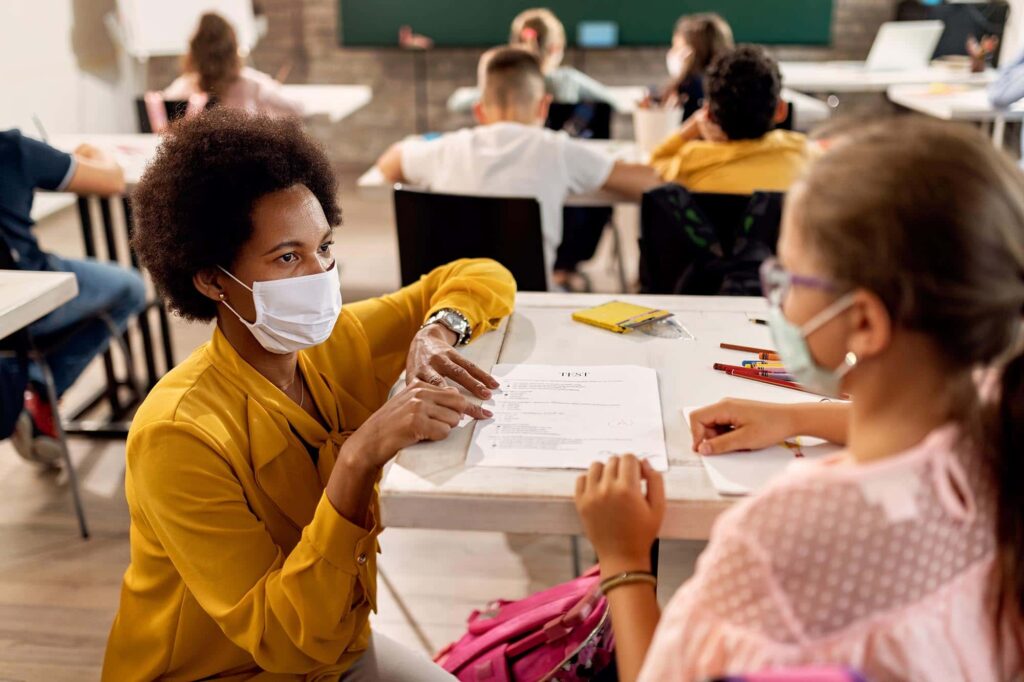Lighting professionals have always played a role in workplace safety. But thanks to new advances in UV technology, lighting experts will soon have an opportunity to make the world a safer place to live and work. With the right technology and application, UV disinfection can target a broad range of pathogens, including both bacteria and viruses even in occupied space.

The Historical Challenge for UV Disinfection
UV, particularly UVC in the range of 200 to 280 nm, has long been recognized for its ability to inactivate viruses. But at certain wavelengths along the UV spectrum, it is not always safe for people to be exposed to it with the potential to harm skin and eyes.
At 254 nanometers (nm), UV can be used to provide intense disinfection to an unoccupied room and provide pathogen reduction in the air and on surfaces within a few hours. However, after a room is irradiated, it can immediately become host to pathogens again when people enter, and any viruses brought into the space can remain until the next cycle of irradiation. Because this form of UV disinfection is harmful to people, it is important to have controls in place to ensure someone cannot inadvertently be exposed.
There is another form of 254nm UV disinfection that was first used in the 1930s in Philadelphia to slow the spread of the measles outbreak in schools. This application, called upper room air disinfection, shines UV toward the ceiling. This application inactivates airborne viruses within the upper portion of the room that is irradiated, while people are present. But because it’s pointed upward, it can only inactivate viruses as they float up into that portion of the room, relying upon adequate air circulation. Surfaces are not able to be disinfected with this method.
A third form of UV disinfection is intense room disinfection using pulsed xenon. This form can very rapidly disinfect a room and is easy to integrate into spaces relative to 254nm applications. Like with 254nm, it cannot be used when people are in the space, so it is often deployed overnight. or intermittently throughout a day as spaces are vacated. As with 254nm intense disinfection, as soon as people reenter the space, the pathogen load increases until the next disinfection cycle.
Enter Continual Room Germicidal UV Disinfection with Care222®
Extensive research through laboratory testing and clinical trials now suggests there is a new, safer way to inactivate viruses with UV light. Filtered 222nm far-UVC light can inactivate viruses, including SARS-CoV-2, and bacteria in short time periods at energy levels that do not harm eyes or skin. That means that in addition to being able to treat both air and surfaces, it is safe to use with people in the room within appropriate design parameters.
The Care222® filtered far-UVC light disinfection technology from Ushio, America utilizes an excimer lamp with a specially designed short pass filter that removes harmful wavelengths. The result is a narrow band of UV light centered at 222nm. Bacteria and viruses on surfaces and in air that come in direct exposure of the Care222 far-UVC light at the appropriate dosage can be rendered harmless.
How do we know Care222® is Safe?
The use of far-UVC light, particularly the 222nm wavelength, originated with researchers at Columbia University. They discovered that 222nm far-UVC light did not penetrate the skin or eyes to the same depth that 254nm UV does. 254nm UV penetrates past the dead skin layer to reach living skin cells, causing Erythema. Similarly, 254nm UV can also penetrate the cornea, causing Photokeratitis. Filtered 222nm light does not reach living skin cells or the cornea. Further research by Kobe University has led to similar conclusions that 222nm far-UVC radiation causes no injury to human skin.
What’s Next?
No UV disinfection method is perfect. The ultimate protection comes when UV disinfection is paired with traditional surface wipe down and disinfection methods. It’s also important to remember that not all 222nm products are the same. The Acuity Brands solution, Care222® is set to hit the market in late 2020. Products will be UL certified with patented filtering technology to remove the more harmful radiation at higher wavelengths. When comparing to other 222nm solutions always ask if they are filtered and if they can provide a spectrum to prove it.
If you’d like to learn more about how Care222® germicidal UV can be integrated in your facility in 2021, now is the time to reach out to your Agilix Solutions representative, or contact your nearest branch location. Our partner Acuity Brands will work to develop a solution for your specific application. For more information, visit www.acuitybrands.com/uvlightdisinfection.
Information for this article was sourced from Acuity Brands.

